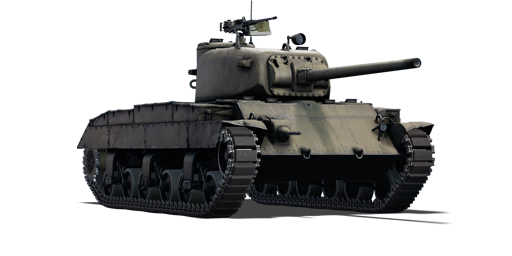The Medium Tank T20 was developed by the U.S. Army during World War II to be the replacement of the Medium Tank M4 (Sherman) family. In July 1943, the Ordnance Department suggested that the 76 mm M1 tank gun armed T23E3 and T20E3 be standardized as the M27 and M27B1. The request, however, was denied, and neither design was ever mass-produced. The U.S. Army did not believe it was necessary to discontinue existing tank production for a vehicle for which there was no immediate need, and the adoption of the 76 mm M1 tank gun was strongly opposed by the U.S. Army. Eventually, various evolutions of the T20 core design resulted in the M26 Pershing.
Introduced in Update 1.63 "Desert Hunters", the T20 can be utilized offensively by taking advantage of its mobility. The T20 would work well in areas with a lot of cover. Due to the fragility of its armour, the T20 should not be used alone; thus, it is important to engage enemies together with other allies for additional firepower and protection. In general, it should be used like a heavier M18 Hellcat, flanking enemies early in the battle and retreating as soon as the situation becomes complicated. With its incredibly fast reverse speed, the T20 allows players to quickly retreat after firing. It is critical that you reposition yourself from time to time to maintain an element of surprise for the enemy.











 2 x (105 / 165 / 195) %
2 x (105 / 165 / 195) % 
 2 x 166 %
2 x 166 % 
